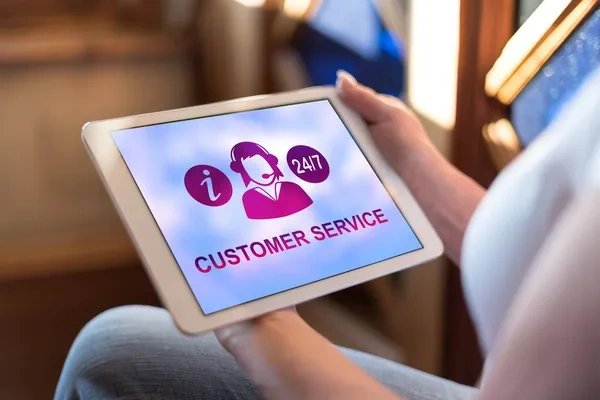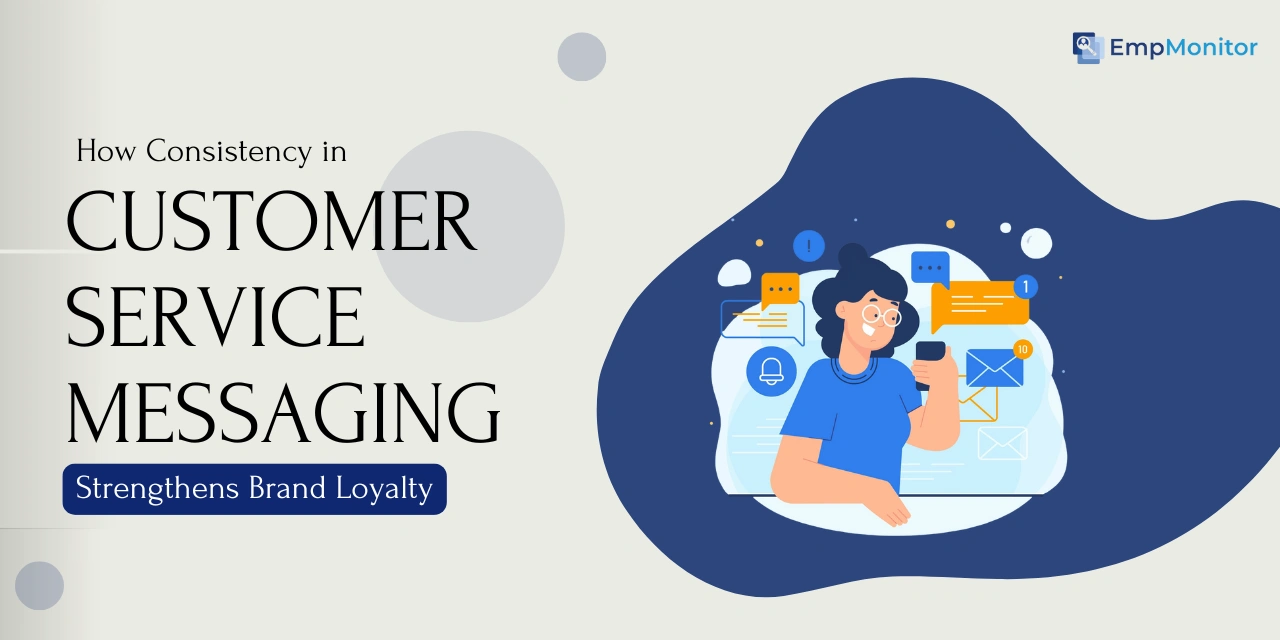Today’s customers don’t just buy a product or service. They seek interaction that builds trust. One of the most powerful tools for building such trust is customer service messaging. This refers to consistent and attentive communication with clients. When a company practices consistent customer service, it builds an image of stability and reliability. This ultimately increases brand loyalty. Because people stay with a brand they trust and can count on.

Image credit: Depositphotos
In a hurry? Listen to the blog instead!
Customer Communication and the Importance of Consistency
Consistency in customer communication begins with the realization that customers encounter the brand through a wide variety of contact channels. When the tone, style, information, or response speed between these channels changes, dissonance occurs. That is, the customer may feel that the brand is not “speaking” in unison with itself. But if the brand provides consistent customer service, then each point of contact becomes part of a single whole in the customer journey. This means that customer expectations are met at all levels.
Customer service messaging and building trust
Trust is built when customers get what they are promised. If a brand says it will respond to all inquiries within 24 hours and always does so, it creates positive expectations. As soon as customer service messaging contradicts these promises, expectations are destroyed. Consistency is rooted in promises, brand tone of voice, and manner of address. As a result, the client not only stays, but also recommends the brand to others. This significantly strengthens brand loyalty.
What practical tools help ensure such consistency in real work? There are, of course, various ones. However, we cannot fail to mention one that is designed to improve customer service work processes. Especially in the field of customer service. We are talking about Clerk Chat as a platform with a wide range of capabilities. In particular, it offers automated responses and analytics. Also, chatbot integration and mechanisms for maintaining a consistent style across all channels. If you are interested in how you can use technology to create a seamless customer experience and improve your support service quality, this solution will provide you with examples of use cases for customer service industries and practical advice.
Consistent Customer Service in Your Organization. Implementation Methods

Image credit: Depositphotos
Define your brand voice. How does your brand speak to customers?
Friendly?
Professional?
Perhaps emotional, or on the contrary, reserved?
Create internal guidelines for tone and voice that will be used from marketing and sales to customer support. All message templates, responses to inquiries, and scripts for phone calls must be consistent. This will help you avoid situations where a client receives one type of response to a question in chat and a completely different one in email.
Staff training. Quality control
Support staff must understand what excellent customer experience is and how important every interaction is. The following will help maintain the ability to respond according to standards:
- Regular customer communication training;
- Role-playing games;
- Analysis of “cold cases”.
In addition, you need to have a quality assessment system:
- Observation or audio/video recordings;
- Customer surveys after interaction;
- Feedback analysis.
- This allows the organization to identify inconsistencies in a timely manner and correct them.
This allows the organization to identify inconsistencies in a timely manner and correct them. To make this process even more efficient, tools like EmpMonitor can be used. Its activity tracking, screen recording, and analytics features help managers monitor real customer interactions, evaluate staff performance, and ensure every response meets the company’s standards. With EmpMonitor, maintaining consistent, high-quality customer service becomes much easier and more reliable.
Technology. Automated services
Technology can greatly facilitate the maintenance of consistent customer service, namely:
- CRM systems;
- Centralized response databases;
- Chatbots;
- Platforms for managing inquiries.
Such tools allow you to keep a history of each customer, where all contacts, promises, and responses are recorded. This way, each subsequent request becomes part of the overall context. This means that the client does not have to repeat themselves. They feel that the brand “knows” and “remembers” them. It is an important element of a good customer experience.
Using employee monitoring software helps track staff interactions and performance, making it easier to maintain consistent, high-quality service and a smoother customer experience.
How Does Brand Loyalty Grow? The Effects of Consistency
Emotional attachment. Reduced risk of switching to competitors.
When customers feel that a brand delivers on its promises consistently and with the same high quality, emotional attachment is formed. People start buying because of a sense of reliability. This attachment is the heart of brand loyalty. Such customers are less likely to switch to competitors, even if those competitors offer something cheaper. It is not only the product that matters, but also the feeling that the client gets during the interaction.
Positive word-of-mouth. Reputation.
When a customer is satisfied, they will tell many others about the brand. If customer service messaging is equally good in chat, emails, etc., it creates a consistent good customer experience that people want to share. Reputation grows and the cost of attracting new customers decreases.
Increased revenue.
Increased share of repeat purchases. Reduced frequency of complaints. Lower support costs. When customers know that a brand responds quickly and respectfully, they are less concerned before making a purchase. This means long-term relationships and higher customer lifetime value. Such profits are higher than when working exclusively on attracting new clients without regard to consistency.
Conclusion
Customer service messaging is an open expression of brand values that should be visible through consistent customer service at all points of contact. Consistency in client communication allows you to build trust and provide a quality customer experience that remains in the memory. This significantly strengthens brand loyalty. For a company to realize all these benefits, it is important to start with clear style standards, staff training, and the use of technologies that help maintain consistency. Then customers get stability, confidence, and a true partnership experience. And that’s what makes a brand a favorite.
Frequently Asked Questions
- How often should a company review its customer service messaging?
It’s best to review messaging regularly—at least quarterly or after major product updates—to ensure consistency across all channels and maintain alignment with brand voice. - Can small businesses benefit from automated tools for consistent messaging?
Absolutely. Even small teams can use CRM systems, chatbots, or employee monitoring tools to manage customer service messaging, track interactions, and maintain a professional, consistent customer experience. - How do you measure if your customer service messaging is effective?
Metrics like response time, customer satisfaction scores, repeat interactions, and feedback analysis can help determine whether messaging is clear, consistent, and building trust. - What role does tone of voice play in customer loyalty?
A consistent tone of voice in customer service messaging conveys reliability and professionalism. Customers recognize and connect with a brand that communicates consistently, which strengthens loyalty and long-term engagement.










